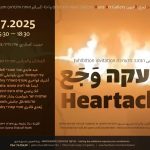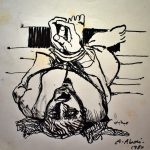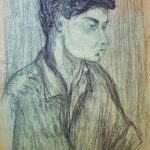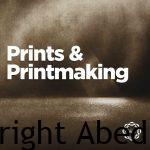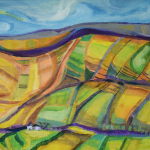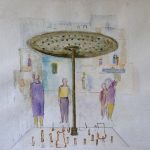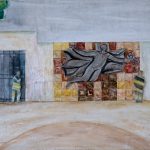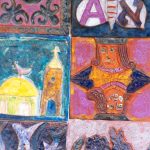
A study on the visual culture of Palestinian / Israeli society through cartoons and illustrations by the Palestinian artist Abed Abdi (1972-1982)
Masters Thesis by Figueiredo, Carolina Ferreira de
Universidade Federal do Rio Grande do Sul, Instituto de Filosofia e Ciências Humanas
This work aims to analyze the visual culture presented in Israel and Palestine during the 1970s and 1980s, through the unique interaction between the images spectrum and the political struggle in Palestine. The study is concerned to understand territories and the scope of Palestinian visuality, especially due to the disruption caused since 1948 – the birthdate of the State of Israel, known as Nakba – and its various developments. To deepen the understanding of visual reverberations in the political experience of artists (and) Palestinians, it will be explored images of everyday appeal and far-reaching, specifically cartoons and illustrations produced by the Palestinian artist Abed Abdi between the years 1972 and 1982: the first ones published in the Al-Ittihad newspaper (1972-1981), and the second ones produced for the literary magazine Al-Jadid (1980-1982). The time frame chosen is set in a moment of a rich production of the artist, also due to his leftist ideological position, filiation to the Communist Party of Israel and the formal studies taken in Dresden, underlying elements to Abdi´s biography. His critical production, markedly political, provides pictures of a complex scenario of relations between Israel, Palestine, other Middle Eastern countries and the rest of the world in the period. Therefore, in between history and art, visuality and politics, it is addressed themes such as identity and historiographical construction of the Nakba, the artistic productions of the Nakba, the construction of the Nation, the insertion of Communism, the nature of the journals, the presence of Palestinian intellectuals, among others. The problem, finally, consists in the hypothesis of the centrality of the visual in the processes of afirmation, discussion, confrontation and expression of the Palestinian causes in the twentieth century. In this scenario, the images produced by Abed Abdi during the 1970s and 1980s are relevant because they provide a visual repertoire in discussing Palestine politically, not only in its relations with Israel and an Arab World, but from their own terms.
Porto Alegre, RSOutono, 2016


